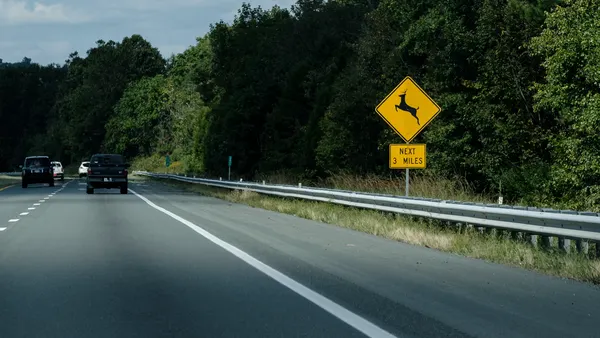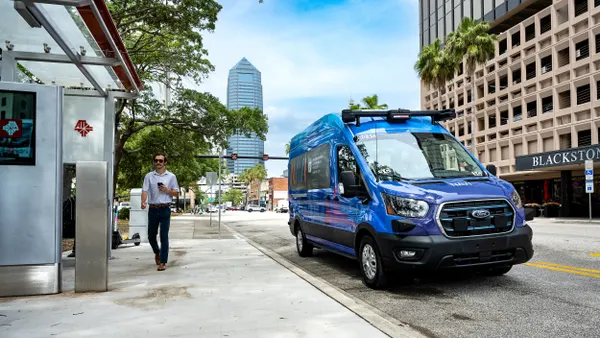Dive Brief:
- A new report from the California Air Resources Board (ARB) found that California is not on track to meet regional greenhouse gas (GHG) reduction goals, in part because of rising emissions from driving. The state will have to significantly slash transportation emissions to meet Gov. Jerry Brown’s goal of carbon neutrality by 2045, according to the report.
- The 2008 Sustainable Communities and Climate Protection Act required 18 state Metropolitan Planning Organizations to set Sustainable Community Strategies (SCSs) that would reduce emissions from driving. The state of California announced in July that it had met its 2020 goal of reducing emissions to 1990 levels four years early; the regional targets in the ARB report are different.
- Despite progress in fuel efficiency and cleaner fuels, ARB says that "significant changes to how communities and transportation systems are planned, funded, and built" will be required to keep the SCS goals.
Dive Insight:
California has defined itself as a climate leader, in large part because of its GHG emissions reductions from the power sector. In September, Brown signed a bill requiring 100% renewable power by 2045, and the state is already getting about 30% of its power from renewables.
The ARB report focuses on transportation, where it says the state is "moving in the wrong direction." The government has set ambitious targets for clean vehicles, with a goal of putting 1.5 million zero-emission vehicles on the road by 2025 (it already has more than 300,000). But those targets can only do so much, and the ARB report says that regional governments are falling short on planning, creating an infrastructure network that puts too many people in single-occupancy vehicles.
Despite some funding changes that directed more money to rail and transit, in the state’s four largest regions the ratio of dollars budgeted for roads versus other modes “has shown remarkably little shift,” the report found. The percentage of commuters driving to work alone is also rising, and the report says that a lack of affordable housing has also pushed some residents further away from their workplaces.
"The changes that have been made so far are clearly not of the magnitude necessary to have yet had a significant impact on these challenges," ARB writes.
Vehicle miles traveled have also increased nationwide, according to Department of Transportation statistics, reflecting the challenge in reducing transportation emissions, which now account for the largest source of greenhouse gases in the country. Cutting vehicle trips will require putting more housing and businesses near transit stations, beefing up alternative transportation options and realigning housing goals to create communities that don’t rely as much on driving.
ARB recommends that California better integrate climate and health into its community planning, including convening an interagency body that can produce a “State Mobility Action Plan for Healthy Communities,” but implementation could be slow going given the significant mindset and funding shifts required.










